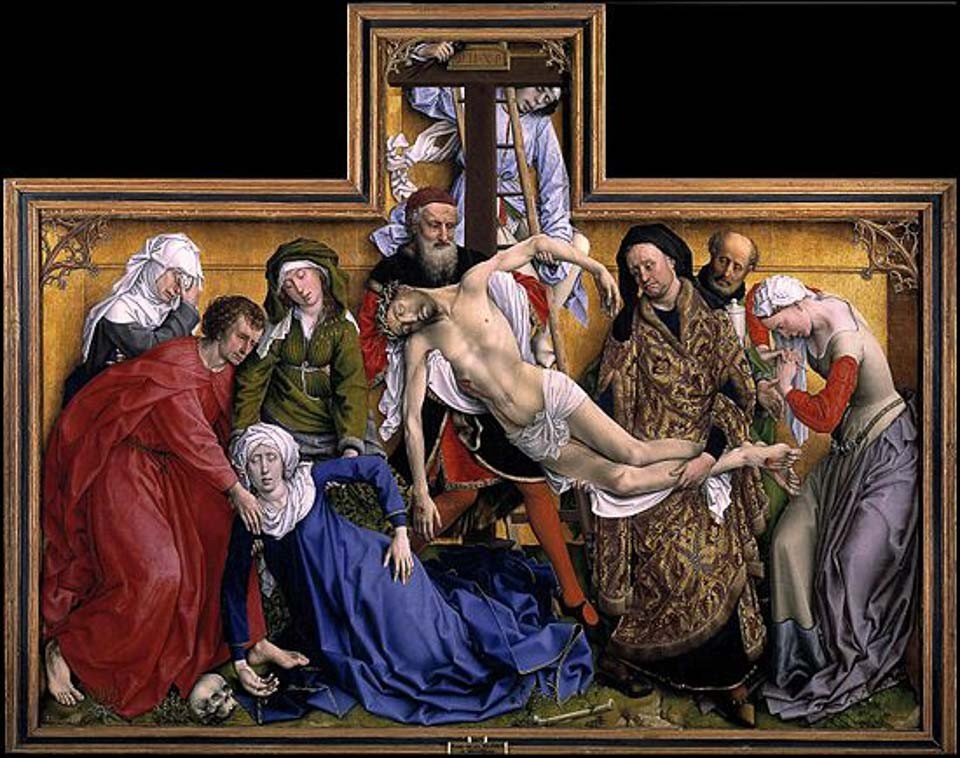
A great museum is one that has great works, famous works, ones that stand out. Ones that make up the high points of a university Art History survey course lecture. The memorable ones. That's Madrid's Prado.
I haven't been to every art museum in Europe, but I've been to many. There are a lot of good ones: The Uffizi in Florence, The Vatican Museum in Rome, The Louvre in Paris, The Rijksmuseum in Amsterdam. They all have at least one work, and usually several, that rank among the best in the world. But my favorite is the Prado in Madrid.
Why is the Prado important, you may ask.
First, a little Museo Nacional del Prado history. A very little. The Prado's collection is just that: a collection. It was assembled (mostly) over a period of time that coincided with the height of Spanish power, and was a personal project of three of the greatest kings of Spanish history: Carlos I, Felipe II, and Felipe IV.
In particular, Carlos I was a big fan of Titian. Felipe II was a dedicated collector, and Felipe IV gave his court painter, Diego Velazquez, a blank check and sent him all over Europe to purchase the best paintings he could find.
All of this, plus the acquisition of the best paintings by Francisco de Goya later, make the Prado an international collection compiled by people of impeccable taste, rather than, as in the case of the Uffizi and Rijkmuseum, the happy accident of an extremely talented local base. Or, in the case of some other museums, whatever a conquering despot could carry off.
So, the Prado ends up with not only the best works by Spanish artists Velázquez, El Greco, Bartolomé Murillo, José de Ribera, Francisco de Zurbarán, and Goya, but also Titian, Rembrandt, Peter Paul Rubens, Anthony Van Dyck, Durer, Bosch, Rafael, Bruegel, Fra Angelico, and Caravaggio.
But, as I said above, what makes a museum really special is when it has several paintings in its permanent collection that just stop you in your tracks and make you stare for several minutes. The Prado has more of these stunning works of art than most. Are these the best paintings in The Prado? Perhaps. Are they the most famous paintings in the Prado? Some are, some aren't. But, they definitely are my favorites.
Here's a little virtual tour of my highlights of the Prado Museum.
Table of Contents
Descent from the Cross, by Rogier van der Weyden
This is the painting I go to first whenever I go to the Prado. I first saw it in 1975, and its attraction has never waned. I head right for it when I come into the museum. (It helps that it's in one of the first rooms right off the main entrance.) And then I stand there and take in this crowning achievement of Flemish art, color by color, face by face, fold of cloth by fold of cloth. Van der Weyden's technique and composition are impeccable, but what really gets me is the humanity as expressed by the fainting Virgin Mary and the sad concern of the men. The figures in the painting are near life size, and that just adds to the emotion. It was originally painted as an altar piece, and so it had a proscribed size. The technique of fitting 10 figures into a sculpture-like composition in a confined space just makes this painting all the more amazing. It is one of the few religious works of western art that really move me.
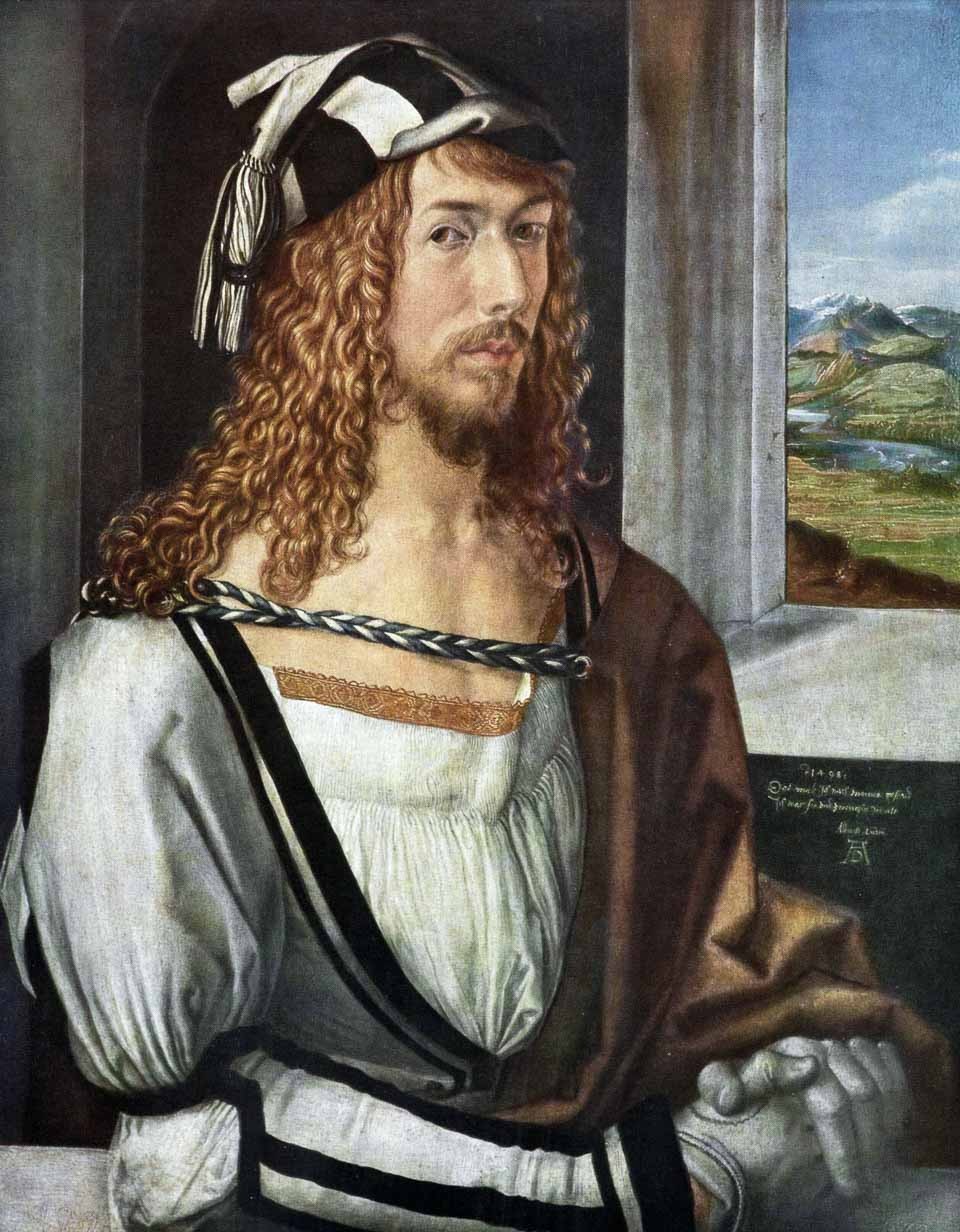
Self Portrait, by Albrecht Dürer
I simply love this painting, mostly because of the look on Dürer's face of utter confidence, and maybe contempt. Confidence because he's obviously an amazingly skilled painter. And contempt because he's only 26 years old at the time he made this, and he's looking down his nose at us mere mortals who have no idea yet of his genius. Gotta love the attitude. And, if you have any idea of whether Dürer could pull it off, you only have to look just to the right of this self portrait to his large format Adam and Eve that he painted about a decade later. He could back it up.
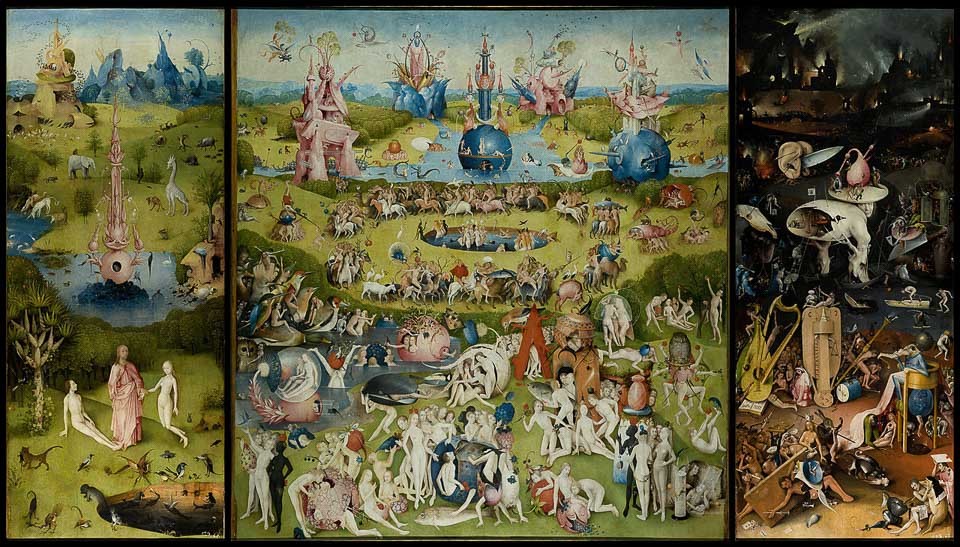
The Garden of Earthly Delights, by Hieronymus Bosch
The triptych allegory of Paradise on the left panel, Hell on the right panel, and the pleasures of life and sin that lead to hell in the center panel. This is one mad painting that rewards a long look at the detail of all three panels. It's surrealistic 400 years before Dalí. You'll need at least 20 minutes in front of this to even begin to look at all the contained images, and a lot longer than that to think of them. It will take you at least 10 minutes of waiting in the crowd that's always in front of it until you can get to the front. Don't give up your space until you begin to feel really uncomfortable thinking about the mind that created this. As a bonus, you can turn just to your right and see a lovely painting of the Holy Family resting on their way to Egypt, which will provide a serene counterpoint to the violence of the Bosch. Then, another three steps to the right is Pieter Bruegel's The Triumph of Death, which will scare the hell out of you all over again.
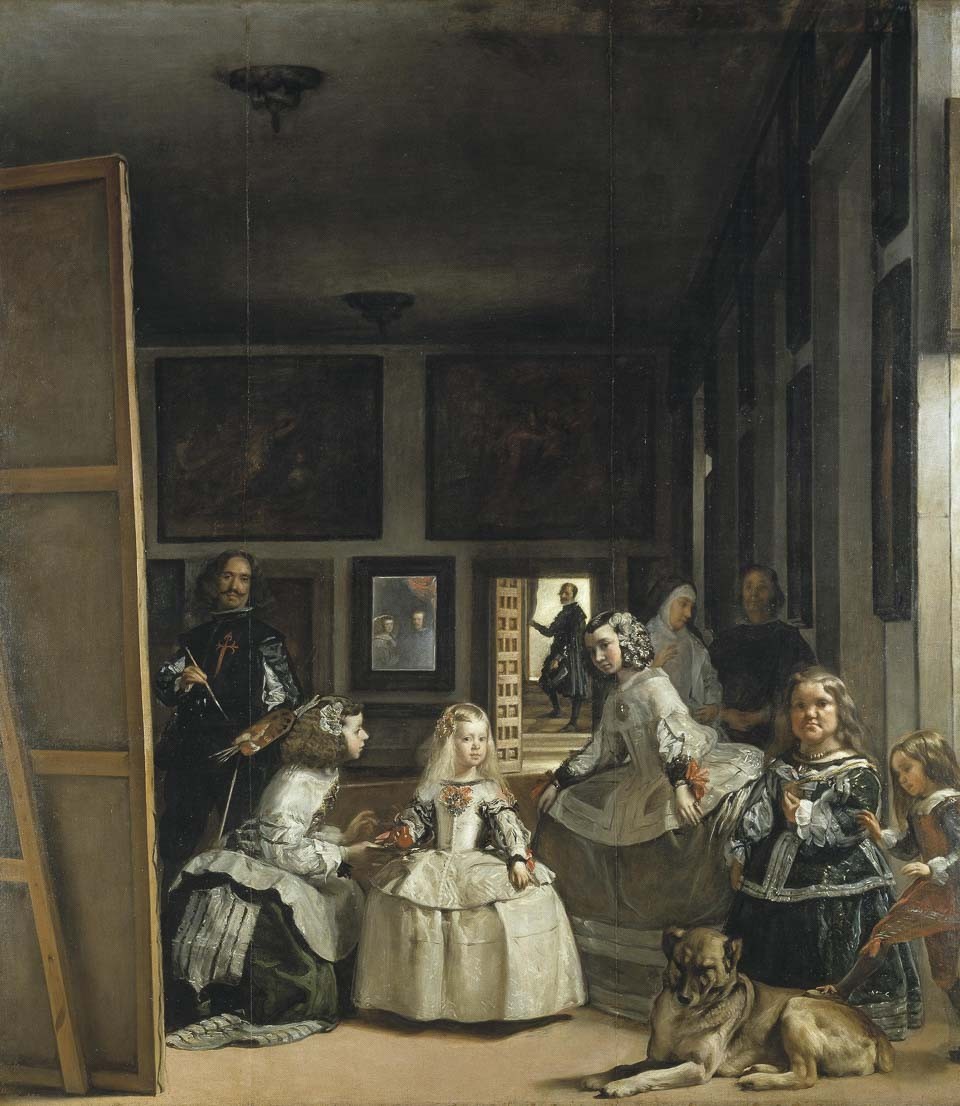
Las Meninas (The Maids of Honor) by Diego Velázquez
There has been so much written about this painting that I can hardly hope to add anything. It's an extremely large painting, over 3 meters high and almost 3 meters wide (10 feet, 6 inches by 9 feet, 1 inch.) And that volume of space just lets the incomparable Velazquez both show off his position as Felipe IV's court painter and his utter mastery of the form. The depth of perspective–the dog in the foreground, the triangular composition of the princess in white and her ladies in waiting, the courtiers behind them, Velazquez himself in front of his canvas, another courtier in a doorway, and, finally, the portrait of the royal couple King Felipe IV and his queen reflected in the mirror on the wall. Just look at the way he handles the window light and how it illuminates the complex composition.

Salome by Titian
As mentioned above, the Emperor Carlos I was a big admirer of Titian. And, it would not be an exaggeration to say that so were all Spanish painters from Valazquez to Goya. There are more than 40 works by Titian in the Prado. To me, this one could be the epitome of Titian's command of color, composition, and emotion. Titian was probably the greatest practitioner of chiaroscuro, or the modeling of his subjects with light, especially how his figures subtly emerge from dark backgrounds. You can certainly see his influence in the Goya Maja Desnuda and the Velazquez Las Meninas cited above. Finally, a personal observation: this is one sexy painting, enhanced by the color technique, of course, but the look of Salome straight out of the plane of the painting at you – just after she's seduced Herod and had John the Baptist beheaded – has to make you wonder what she has in store for you.
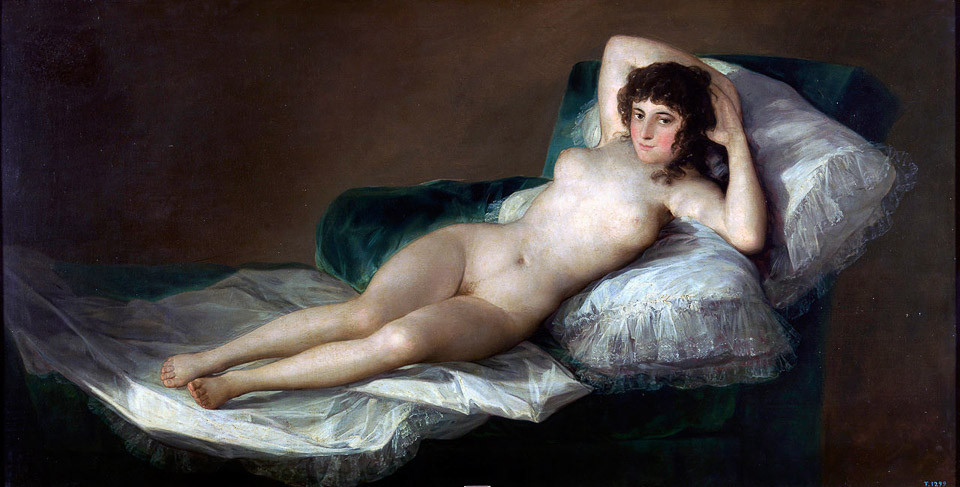
La Maja Desnuda by Francisco de Goya
This beautiful young woman on a divan was either the Duchess de Alba or the mistress of Goya's patron, Manuel Godoy. Either way, the Naked Maja of Goya is one of the most seductive paintings in the history of painting. It's displayed right next to its companion piece, the Clothed Maja, but the difference is striking. The nude is so much more delicately and lovingly rendered than the clothed version. One could tell that Goya himself was deeply affected by her beauty. As are we. The painting was sequestered for years by the Spanish Inquisition, and we can see why. It arouses exactly the feelings the Inquisition imprisoned not only paintings for. Goya himself was spared only because he was able to convince them that the painting was a classical study, rather than an erotic tour de force. P.S. Also don't miss Goya's “black paintings” and the paintings from the time of the Napoleonic Wars in their own rooms on the lower floor of the Prado. Those paintings, especially Saturn Devouring his Son and The Third of May, are the most emotionally wrenching you'll ever see.
If you are as big a fan of the Prado as we are, consider supporting the American Friends of the Prado Museum. They have many educational offerings in English on the Prado's collections their YouTube channel. Be sure to use them to educate yourself before visiting The Prado. Also, American Friends of the Prado Museum membership supports acquisitions and restoration at the museum.
An American Friends of the Prado membership includes: entry to the Museo del Prado; assistance with required time reservation; an e-newsletter with updates on American Friends projects and museum activity; and discounts at the museum store and cafeteria. The membership is tax deductible in the US.
Up Your Travel Skills
Looking to book your next trip? Use these resources that are tried and tested by us. First, to get our best travel tips, sign up for our email newsletter. Then, be sure to start your reading with our Resources Page where we highlight all the great travel companies and products that we trust. Travel Accessories: Check out our list of all the accessories we carry to make getting there and being there a lot easier. Credit Cards: See our detailed post on how to choose the right travel rewards credit card for you. Flights: Start finding the very best flight deals by subscribing to Thrifty Traveler. Book your Hotel: Find the best prices on hotels with Booking.com. See all of the gear and books we like in one place on our Amazon shop.Got a comment on this post? Join the conversation on Facebook, Instagram, or Threads and share your thoughts!



Comments are closed.